This article was medically reviewed by Sarah Gehrke, RN, MS. Sarah Gehrke is a Registered Nurse and Licensed Massage Therapist in Texas. Sarah has over 10 years of experience teaching and practicing phlebotomy and intravenous (IV) therapy using physical, psychological, and emotional support. She received her Massage Therapist License from the Amarillo Massage Therapy Institute in 2008 and a M.S. in Nursing from the University of Phoenix in 2013.
wikiHow marks an article as reader-approved once it receives enough positive feedback. This article received 22 testimonials and 92% of readers who voted found it helpful, earning it our reader-approved status.
This article has been viewed 1,208,026 times.
While caterpillars are cute and fun to watch, they also have the potential to sting you badly. Caterpillar stings can cause minor symptoms or they can initiate a potentially dangerous allergic reaction. To treat caterpillar stings, you need to clean the site of the sting, treat the symptoms of the sting, and consult a medical professional if symptoms become severe. In the end, you will recover more easily from your caterpillar sting.
Steps
Cleaning the Sting Site
-
1Remove the caterpillar without touching it. If the caterpillar is still on your skin, use pliers, tweezers, or thick gloves to pick up the caterpillar and remove it. Never try to remove the caterpillar with your bare hands because it can sting you again.[1]
- Caterpillar stings come from their tiny spines that look like hairs. That is why that it is so important to avoid touching them with your fingers.
-
2Use tape to remove spines from the skin. Get scotch tape, duct tape, or something similar. Place it over the site of the sting, then quickly remove it. The tape will catch any poison hairs or spines that remain in your skin. This is important to minimize sting symptoms and prevent additional stings.[2]
- You can also use the adhesive part of a bandage to remove hairs or spines.
Advertisement -
3Wash the area. Use soap and warm water to wash the area thoroughly. In addition, wash the surrounding area as well. Finally, make sure to wash both of your hands thoroughly, just in case you came into contact with poison or stingers.[3]
Treating Symptoms
-
1Apply a baking soda and water paste. Mix one tablespoon of baking soda with one to two tablespoons of warm water. Liberally apply the paste to the area of the sting and allow it to sit for a couple of minutes. The baking soda paste should reduce itching and other discomfort. Reapply the paste every couple of hours.[4]
-
2Use a hydrocortisone cream. If the baking soda fails to alleviate your symptoms, rinse the baking soda paste off and then apply a liberal amount of hydrocortisone cream. Allow the cream to sit. It may take up to an hour for it to sooth the sting site. Reapply the cream according to the instructions on the product.[5]
-
3Try an antihistamine cream. If hydrocortisone cream also fails, wash thoroughly, and then apply a liberal amount of antihistamine cream. Wait for up to half an hour to see if you notice a difference. In many cases, antihistamine creams have proven ineffective in soothing the symptoms of a caterpillar sting, however you may find that the cream works for you.[6]
-
4Apply a cold compress. After you have applied the baking soda paste or a cream, you can put a cold compress on the site of the sting. Place a bag of ice or frozen vegetables on the site of the sting for 10 to 20 minutes at a time. Reapply the cold compress every hour or two.[7]
Getting Medical Help
-
1Watch for the development of serious symptoms. Caterpillar stings can result in a variety of symptoms. Depending on the type of caterpillar and any allergies you may have, symptoms can be very mild or very severe. Common symptoms include:[8]
- Itchiness and contact dermatitis, blisters, weals (welts), small red bumps, pain
- Acute conjunctivitis, if hairs penetrate the eyes
- Rash and hives
- Difficulty breathing
- Nausea and vomiting
- Bleeding and renal failure can occur after contact with the South American Lonomia caterpillar.
-
2Contact your doctor if you experience worsening symptoms. If you develop blisters, large welts, or a rash that spreads, contact your doctor immediately. This is important, as some people can develop potentially deadly allergic reactions to caterpillar stings.[9]
-
3Call Poison control for more information. Poison control can be reached at 1-800-222-1222 any time of the day or night, if you have any questions about how to treat a caterpillar sting. A poison specialist will answer the phone and provide you with recommendations about how to treat the sting site.[10]
-
4Get a tetanus booster shot. If you have not had a tetanus booster in the last five to 10 years, you should get one within 72 hours of being stung by a caterpillar. This is because the sting/wound site may become open to bacteria and infection.[11]
Expert Q&A
-
QuestionHow do I stop my skin from being very red and itchy after a caterpillar sting?
 Sarah Gehrke, RN, MSSarah Gehrke is a Registered Nurse and Licensed Massage Therapist in Texas. Sarah has over 10 years of experience teaching and practicing phlebotomy and intravenous (IV) therapy using physical, psychological, and emotional support. She received her Massage Therapist License from the Amarillo Massage Therapy Institute in 2008 and a M.S. in Nursing from the University of Phoenix in 2013.
Sarah Gehrke, RN, MSSarah Gehrke is a Registered Nurse and Licensed Massage Therapist in Texas. Sarah has over 10 years of experience teaching and practicing phlebotomy and intravenous (IV) therapy using physical, psychological, and emotional support. She received her Massage Therapist License from the Amarillo Massage Therapy Institute in 2008 and a M.S. in Nursing from the University of Phoenix in 2013.
Registered Nurse If you have already tried a baking soda and water paste, cool compresses, over-the-counter hydrocortisone, and/or an anti-itch cream like Benadryl, contact your primary care doctor or dermatologist for a stronger cream. You can also try an oral, over-the-counter antihistamine pill. A dab of apple cider vinegar may also provide relief.
If you have already tried a baking soda and water paste, cool compresses, over-the-counter hydrocortisone, and/or an anti-itch cream like Benadryl, contact your primary care doctor or dermatologist for a stronger cream. You can also try an oral, over-the-counter antihistamine pill. A dab of apple cider vinegar may also provide relief. -
QuestionCan gypsy moth rashes be fatal?
 Sarah Gehrke, RN, MSSarah Gehrke is a Registered Nurse and Licensed Massage Therapist in Texas. Sarah has over 10 years of experience teaching and practicing phlebotomy and intravenous (IV) therapy using physical, psychological, and emotional support. She received her Massage Therapist License from the Amarillo Massage Therapy Institute in 2008 and a M.S. in Nursing from the University of Phoenix in 2013.
Sarah Gehrke, RN, MSSarah Gehrke is a Registered Nurse and Licensed Massage Therapist in Texas. Sarah has over 10 years of experience teaching and practicing phlebotomy and intravenous (IV) therapy using physical, psychological, and emotional support. She received her Massage Therapist License from the Amarillo Massage Therapy Institute in 2008 and a M.S. in Nursing from the University of Phoenix in 2013.
Registered Nurse The short answer is: probably not. The rash that appears can cause annoying itchiness that may last up to two weeks, but most cases are not serious. However, if any rash is getting worse or you are having difficulty breathing, then emergency care should be taken.
The short answer is: probably not. The rash that appears can cause annoying itchiness that may last up to two weeks, but most cases are not serious. However, if any rash is getting worse or you are having difficulty breathing, then emergency care should be taken.
Warnings
- Never let pets or children play with unknown creatures, even something as small as a caterpillar. Teach children to avoid brightly colored and spiny caterpillars especially- showy colors and crests of hairs are often nature's code for poison.⧼thumbs_response⧽
- Even caterpillars that do not sting can be harmful to your yard. Watch for white, cobwebby nests of caterpillars in trees; evergreen bagworms and spongy moth caterpillars are parasitic and can kill trees.⧼thumbs_response⧽
Things You'll Need
- Tape (duct tape, Scotch tape, cellophane tape) or a commercial face peel
- Baking soda (bicarbonate of soda) and water paste
- Ice pack, or frozen food (Anything cold or frozen should do)
- Clean water and soap
- Pain relief
- Cold compress
- Hydrocortisone cream
- Antihistamine cream
References
- ↑ http://www.poison.org/articles/2014-jun/caterpillar-stings
- ↑ http://www.poisoncentertampa.org/poison-topics/venomous-critters/caterpillars/
- ↑ https://nt.gov.au/wellbeing/emergencies-injuries-and-accidents/bites-and-stings/itchy-caterpillars/symptoms-diagnosis-treatment
- ↑ http://www.poison.org/articles/2014-jun/caterpillar-stings
- ↑ http://www.poison.org/articles/2014-jun/caterpillar-stings
- ↑ http://www.poison.org/articles/2014-jun/caterpillar-stings
- ↑ http://www.austin.org.au/page/534
- ↑ http://emedicine.medscape.com/article/772949-overview
- ↑ http://www.poison.org/articles/2014-jun/caterpillar-stings
About This Article
To treat a caterpillar sting, start by placing some scotch or duct tape over the site of the sting. Then remove it quickly, so it pulls any remaining spines out of your skin. Once it seems like most of the spines are gone, wash your hands using soap and warm water. If you notice symptoms like itchiness or discomfort, mix together 1 tablespoon of baking soda and 1-2 tablespoons of warm water, then apply the paste to your skin every couple of hours. If this doesn't work, try using a hydrocortisone or antihistamine cream on your sting, or contact your doctor for more help. For more tips from our Medical co-author, including how to treat a caterpillar sting with a cold compress, read on!

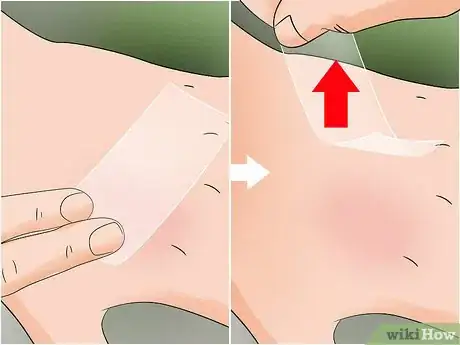

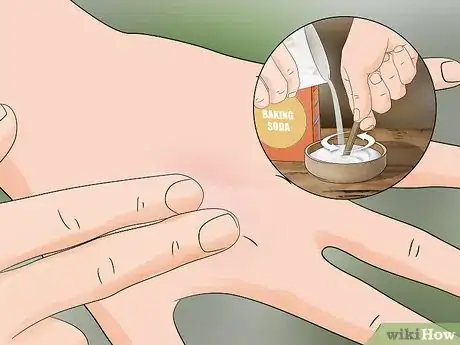
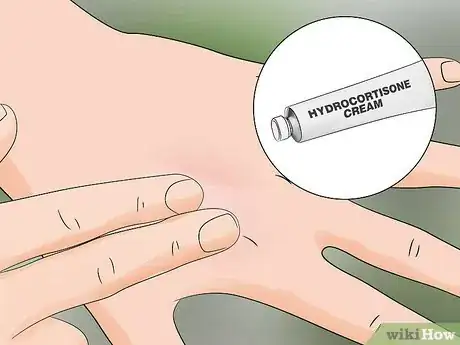
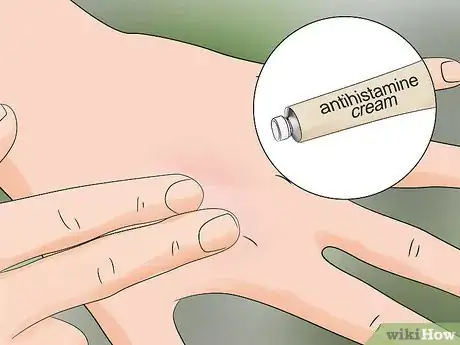
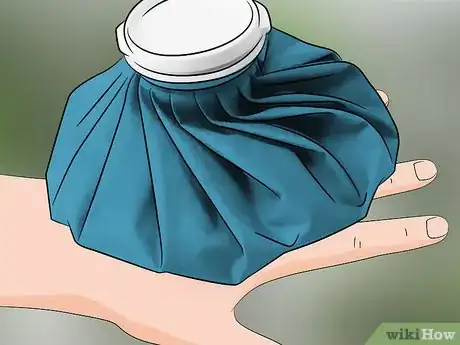
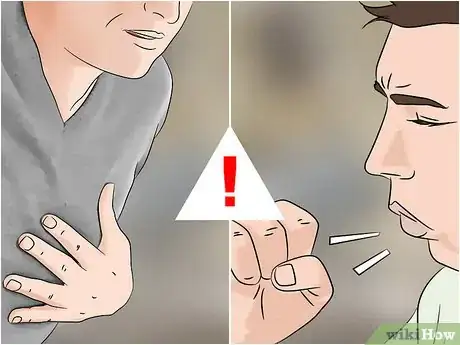
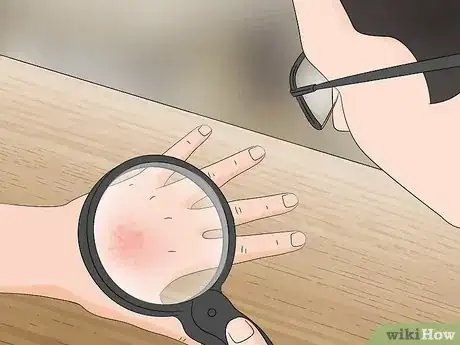

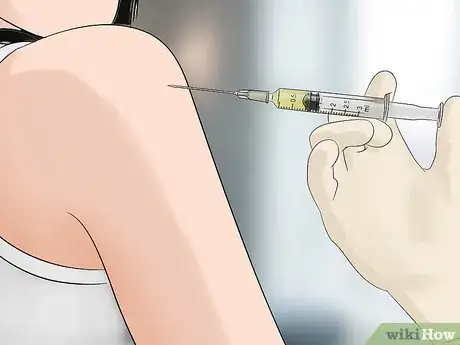

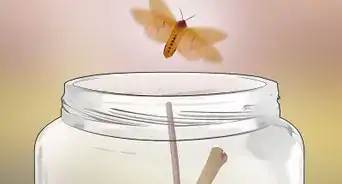






























































Medical Disclaimer
The content of this article is not intended to be a substitute for professional medical advice, examination, diagnosis, or treatment. You should always contact your doctor or other qualified healthcare professional before starting, changing, or stopping any kind of health treatment.
Read More...